#Renaissanceart
Photo

Interview: Pre-Raphaelites: Modern Renaissance
Pre-Raphaelites: Modern Renaissance marks the first multidisciplinary exhibition in Italy to examine the profound impact of Italian Renaissance art on the Pre-Raphaelite movement, which flourished in Victorian and Edwardian Britain (c. 1840-1920).
Displayed throughout the hallowed halls of the San Domenico Museum, a restored 13th-century Dominican convent in Forlì, Italy, are over 300 works of art, which juxtapose and highlight the revolutionary creativity and intensity of two important artistic eras. In this exclusive interview, James Blake Wiener speaks to Mr. Peter Trippi, a co-curator of the exhibition and an expert of Victorian art, about the exhibition.
JBW: Peter, thanks so much for speaking to me and introducing us to a most gorgeous exhibition.
I have always seen the Pre-Raphaelite artists as rebels and innovators. Their rejection of Victorian complacency and industrial materialism, as reflected in their works, shocked segments of the British public. Looking to the distant past to find a more natural vision, Pre-Raphaelite artists embraced that which was ordinary while still applying innovation to technique and treatment of form in novel ways.
What was it that made the revolt of the Pre-Raphaelite Brotherhood so enduring and yet so profound in its immediate impact?
PT: The earliest paintings exhibited by members of the Pre-Raphaelite Brotherhood electrified their contemporaries in the late 1840s and early 1850s for several reasons. Visually, they were completely out of step with everything around them at London's crowded major exhibitions: their brilliant coloring stood out from the drab browns and greys used by most artists at the time; their draftsmanship and paint handling was precise rather than "sloshy" (the term they used to criticize their older colleagues); their compositions were willfully naïve and sometimes even jarring, ignoring the polite post-Raphaelite conventions that the Royal Academy promoted; and they were depicting narratives that were unexpectedly high-minded (such as the Annunciation to the Virgin Mary) or gruesomely passionate (such as the run-up and aftermath of Lorenzo's murder in John Keats's Romantic poem Isabella and the Pot of Basil). Viewers could see these were young men with talent and something fresh to say, but they were not quite sure what to do with it. It was not until 1851, when the prestigious critic John Ruskin came to their defense, that the British public began to accept these innovations.
The continuing power of those innovations was demonstrated in 1986 when I was sitting in an art history lecture hall at the University of St. Andrews in Scotland. As an American exchange student, I had never even heard of the Pre-Raphaelites (who were little known in the U.S. then). But I sat up straight in my chair as their brilliantly colored, oddly composed, and often erotic images came up on the screen. 175 years after its launch, the Pre-Raphaelite Brotherhood's power to fascinate is still evident. Once they start, people cannot stop looking.
JBW: Highlights on display within the exhibition include celebrated paintings and drawings by the great Italian masters, including Botticelli, Lippi, Verrocchio, Michelangelo, Veronese, Titian, and even Guido Reni. These are juxtaposed with major works by British artists including Dante Gabriel Rossetti, John Everett Millais, William Holman Hunt, John Ruskin, and J. W. Waterhouse, among others. The pairing of Renaissance Italian antecedents with Pre-Raphaelite masterpieces affords visitors a rare opportunity to compare and contrast across time and space.
What new perspectives can the visitor learn with regard to Pre-Raphaelites as a result of this exciting pairing?
PT: The exhibition at Forlí has a light touch; it is almost poetic in the way it allows the Italian Old Masters and their British admirers to converse with each other in the same rooms, without striving to show direct influences or replications. A great example is the large room of Dante Gabriel Rossetti's mature paintings, most of which show women in bust-length portrait formats, as if sitting at a window. These images (of such sitters as Jane Morris and Fanny Cornforth) have become famous around the world, but never before have we seen them hanging side by side, literally interspersed, with the Madonnas, Florentine noblewomen, and Venetian courtesans to which Rossetti was responding. It is only in an art-rich country like Italy that a museum can make this case so visibly. In the UK, for example, there simply are not enough of the Italian prototypes available to lend them to a show about 19th-century British art. My co-curator Liz Prettejohn and I knew that this opportunity might never come again and so we pounced on it. Once visitors leave that Rossetti room, they will never see his famous woman-at-the-window the same way; suddenly her backstory has become clear.
JBW: Aside from paintings and drawings, sculptures, prints and photographs, to furniture, ceramics, glass, metalwork, tapestries, wallpaper, illustrated books, and jewelry are also displayed within Pre-Raphaelites: Modern Renaissance.
Many Pre-Raphaelites artists believed that the way art was produced could shape wider cultural values. Is this reflected within the exhibition, and if so, how?
PT: Our curatorial team was eager to show how the Pre-Raphaelites' innovative ideas about the power and romance of Italian Renaissance art were transmitted not only through "fine art" (paintings, sculptures, drawings, and prints) but also through the applied (decorative) arts. We invited Dr. Charlotte Gere, the London-based scholar of decorative arts, to join the team, and she selected most of those artworks, primarily from the Victoria and Albert Museum, Fitzwilliam Museum, and British Museum, but also from other UK collections. One of her aims was to show that the "second generation" of Pre-Raphaelites – especially Edward Burne-Jones and William Morris – were determined to bring their aesthetic into immersive environments ranging from churches to the dining rooms at the Victoria and Albert Museum. They also made objects in every possible medium that individuals could buy and live with, often on the expensive side, but not always. By 1870, their worldview had morphed into the Aesthetic Movement (the so-called Cult of Beauty), which impacted every aspect of visual culture in the UK and, by extension, its empire and the United States. The most dramatic examples of immersive decoration in our show are the huge Holy Grail tapestries designed in the 1890s by Edward Burne-Jones and hand-woven by William Morris's team for a wealthy collector's baronial hall near London.
JBW: Pre-Raphaelites: Modern Renaissance additionally explores the important and often overlooked contributions made by accomplished female artists to the Pre-Raphaelite movement.
What can you tell us about these Victorian talents, and how are they differentiated from their male colleagues within the show?
PT: We are pleased to have 15 women artists represented in our exhibition through 26 different works. In order of appearance, they are Elizabeth Siddal, Christina Rossetti, Maria Rossetti, Eliza Jameson Strutt, Evelyn De Morgan, Christiana Jane Herringham, Constance Phillott, Maria Cassavetti Zambaco, Marie Spartali Stillman, Julia Margaret Cameron, Beatrice Parsons, Marianne Stokes, Phoebe Anna Traquair, Eleanor Fortescue-Brickdale, and May Cooksey. Over the past quarter-century, scholars have proven that women were fully involved in the Pre-Raphaelite movement as it evolved over time, but usually, their stories have been ignored or even erased by subsequent generations. That injustice is certainly not unique to art history, but it is time to rectify it, and we were delighted that so many relevant loans were approved.
Some of these women have been thoroughly studied (such as Dante Gabriel Rossetti's wife and collaborator, Elizabeth Siddal) while others still need to be investigated (such as the enigmatic May Cooksey). We have scattered them throughout the show rather than placing them in a female "ghetto," and we are especially proud to have six major examples of mature work by Evelyn De Morgan. Her parents wanted her to marry a rich man and start a family, but with the help of her artist-uncle J. R. Spencer Stanhope (also in our show), she pursued formal artistic training and ultimately exhibited her large symbolist canvases at London's prestigious Grosvenor Gallery right alongside starry male colleagues like Edward Burne-Jones. I would argue that she surpassed her uncle in quality and ambition.
JBW: I was intrigued to learn that over time, the Pre-Raphaelites and their admirers shifted their attention to other periods in Italian art, including 16th-century Venetian art.
Could you tell us more about this transfer in focus, and how that is revealed within the exhibition?
PT: Because the period we are studying is so long (1840s through 1920s), it is inevitable that the British artists would shift in their predilections for Italian art. In the beginning, the Pre-Raphaelite Brothers had little original Italian art to study in person in London, so they consulted prints and illustrated books. One of their heroes was Fra Angelico, not only for his seemingly naïve compositions and handling (naïve as compared with Raphael) but also because he was a monk – a man of faith who expressed his devotion through art, something the Brothers felt was lacking in British art of the 1840s. Our co-curator Cristina Acidini (former head of the Museums of Florence) selected a superb Angelico, which is now displayed at one end of the huge church that serves as our exhibition's first gallery. At the other end, she has placed Botticelli's famous Pallas and the Centaur so that they face each other. This is a brilliant and quite poetic juxtaposition; back in 1848, when the Brotherhood launched, no one was talking about Botticelli at all. By the 1870s – thanks in large measure to British scholars and collectors getting interested in him – Botticelli was all the rage and was particularly influential on Edward Burne-Jones, whose Holy Grail tapestries are shown just beyond Pallas and the Centaur.
We have many moments of transition like this throughout the show. The gallery devoted to Frederic Leighton is a key example, with its insertion of Lotto, Veronese, and Reni – a disparate trio of heroes! Again, such a loan list could only happen in an art-rich country like Italy. No British or American museum could deliver these prototypes in such quantity or quality.
JBW: One can say that the convent, itself, is another star of the show.
How was it chosen as the venue for Pre-Raphaelites: Modern Renaissance, and why is it the perfect venue to showcase Pre-Raphaelite and Renaissance masterpieces?
PT: It was only in 2021 that director Dr. Gianfranco Brunelli conceived this theme as a logical extension of the series of superb loan exhibitions he has been mounting at the Museo San Domenico. (Most of them have focused on Italian and Continental art, including specific masters and themes such as Mary Magdalene. This is the first one to encompass British art.) He brought in Cristina Acidini (see above) and Francesco Parisi (an independent scholar based in Rome) and then Liz Prettejohn and me. In 2022, we began requesting loans from museums and individuals around the world, and by February 2024, we were opening the show! That is a comparatively quick development process, and I think one reason it worked so well is that many lenders were intrigued by the idea of their British-made, Italian-inspired artworks being shown in Italy to modern Italian audiences.
This theme has previously been tackled in a few exhibitions (e.g., London, San Francisco), but with only a few Renaissance prototypes on view – never so many as we have now. Moreover, the fact that the Museo San Domenico is a renovated medieval monastery adds visual power and meaning to the visitor experience; this is especially notable in the former refectory now devoted to Edward Burne-Jones. In many of his paintings we see scrolling foliage that he borrowed from Renaissance art, and painted on the ceiling above in the Middle Ages are those same scrolling forms. The outer walls are lined with Burne-Jones's art, while the middle of the room features major prototypes by such forerunners as Bellini, Mantegna, and Michelangelo.
JBW: Many readers may agree with me that the Pre-Raphaelite artists remain so compelling because of the exuberance, naturalism, and luminosity found in their works. The Pre-Raphaelites' love affair with the art of the Italian Renaissance allowed them to drive innovation within artistic creation.
What then is the legacy of the Pre-Raphaelites? Moreover, why do you believe visitors come to see this exhibition?
PT: I think that many museums today underestimate the ability of visitors to connect the visual dots for themselves. We are often "spoon-fed" curatorial arguments because our own grasp of art history is slim, and that is OK because it is better to do this than appear exclusive or intimidating. In Italy, however, all young children in public and private elementary schools are taught art history and studio art (and this continues right through high school). And, of course, they are literally surrounded by Italian Renaissance art, which they see not only inside churches and museums but also in public spaces such as piazzas. This means that the visitors in Forlí (95% of whom are Italian) are already familiar with the Italian Renaissance art on view, and therefore eager to learn about the British artists who revered it and adapted it to their own ends.
The response we are getting (through the Italian media and conversations occurring inside the exhibition galleries) is one of surprise (e.g., "How did we not know about these terrific British artists before?") and also of mutual respect: this show is about a profound love and admiration that British artists felt for Italy, and in the final room we even show examples of how late 19th-century Italian artists integrated British approaches into their own work.
We hope that all our visitors will choose to learn more (perhaps by visiting major collections of Pre-Raphaelite art at venues like Tate Britain and the Birmingham Museum & Art Gallery), and ultimately see how imagery and ideas travel across eras and places that are seemingly disparate. Artists play a special role in society by transcending superficial boundaries and looking – really looking – at their colleagues' creations with respect and insight.
Art made by Italians at the end of the nineteenth century
JBW: Peter, on behalf of World History Encyclopedia, I thank you so much for sharing your knowledge with us! I thank you so much for your time, consideration, and expertise.
PT: Thank you for taking the time to ask these important questions!
Pre-Raphaelites: Modern Renaissance remains on display, at the San Domenico Museum Piazza Guido da Montefeltro, in Forlì, Italy, until June 30, 2024.
Peter Trippi is editor-in-chief of Fine Art Connoisseur, the national magazine that serves collectors of contemporary and historical realist art, and president of Projects in 19th-Century Art, a firm he established to pursue research, writing, and curating opportunities. Based in New York City, Peter recently completed a six-year term as president of the Foundation for Advancement in Conservation, which supports and raises awareness of the American Institute for Conservation, the country's leading society of conservation and preservation professionals. Peter previously directed the Dahesh Museum of Art (New York City), headed development teams at the Brooklyn Museum and Baltimore Museum of Art, and has created (with Prof. Liz Prettejohn, University of York) international touring exhibitions and publications devoted to the 19th-century British painters J.W. Waterhouse and Lawrence Alma-Tadema. Their latest curatorial project, the exhibition Pre-Raphaelites: Modern Renaissance, is on view in Forlí (near Bologna, Italy) through June 30. It is accompanied by a 600-page catalogue in Italian.
Continue reading...
25 notes
·
View notes
Text






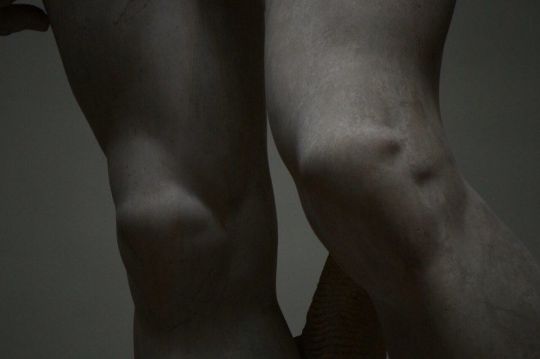

I couldn't help but post this.
Michelangelo's David in the Galleria dell'Accademia.
#Michelangelo#David#Sculpture#GalleriaDellAccademia#Art#Masterpiece#Florence#Italy#Culture#History#FineArt#Beauty#RenaissanceArt#ItalianArt#ClassicalArt#FamousArtwork#SculptureAppreciation#ArtHistory#Tourism#TravelPhotography#IconicSculpture#CulturalHeritage
21 notes
·
View notes
Text

The Luthier (@the.luthier) • Instagram photos and videos
#art#artoftheday#artistsoninstagram#artgallery#artist#artwork#artcollector#artofinstagram#graphicdesign#digitalart#arthistory#artlover#artstudio#arts#design#painting#instaart#digitalartist#illustration#baroque#artworks#renaissance#renaissanceart#historyofart#costumes#digitalpainting#interiordesign
11 notes
·
View notes
Text
Ophelia

Sarah Bernhardt, Ophelia (n.d.). White marble in a wood frame, 70 x 59 cm. Private collection, Normandy, France.
In the realm of art and literature, few scenes are as hauntingly captivating as Ophelia's tragic demise in William Shakespeare's Hamlet. Sarah Bernhardt, celebrated for her unparalleled prowess on the stage, extends her artistic expression into the medium of sculpture with her rendition of Ophelia. This piece, a rare surviving work signed by Bernhardt, offers a unique visual exploration of one of literature's most poignant figures.
A Fusion of Art and Tragedy:
Bernhardt's Ophelia is not merely a sculptural representation; it is a narrative frozen in marble. Inspired by Shakespeare's vivid depiction of Ophelia's final moments, Bernhardt captures the essence of the character's tragic end through the medium of high relief. The sculpture portrays Ophelia in a bust form, her head elegantly turned, eyes closed, as if in peaceful resignation to her fate.
The Garland of Flowers:
Adorned with a garland of flowers, the sculpture's Ophelia is enveloped by water that seamlessly merges with her tresses. Bernhardt’s attention to detail is manifest in the intricately carved flowers and the delicate waves of the 'glassy stream', creating a texture that contrasts strikingly with the smooth, bulging form of Ophelia's exposed breast. This duality of texture highlights the sculpture's technical mastery and artistic depth.
A Moment Between Life and Death:
Though depicted at the moment of her death, Bernhardt's Ophelia exudes an undeniable eroticism through her sensuous open-mouthed expression, overt nudity, and languid pose. This portrayal suggests not despair but an ecstatic consummation, presenting death not as a moment of loss but as a profound, albeit tragic, fulfillment. It's a bold interpretation that challenges traditional readings of Ophelia's character, suggesting a deeper, perhaps more complex relationship between the heroine and her fate.
Bernhardt's Artistic Legacy:
Sarah Bernhardt's Ophelia stands as a testament to her multifaceted talent and her ability to traverse the worlds of acting and sculpture with equal finesse. The sculpture serves not only as a memorial to Ophelia's tragic story but also as a reflection of Bernhardt's own interpretive genius and her capacity to imbue marble with the breath of life and emotion.
Reflecting on Ophelia:
In Bernhardt's Ophelia, we are invited to reconsider the narrative of the doomed heroine, seeing her not as a victim of circumstance but as a figure of complex emotional and existential depth. The sculpture asks us to ponder the thin line between life and death, the beauty found in the tragic end, and the eternal resonance of Shakespeare's work through the lens of Bernhardt's sculptural vision.
Your Perspective:
How does Sarah Bernhardt's sculptural interpretation of Ophelia challenge or enrich your understanding of the character? Does this portrayal alter your perception of Ophelia's final moments as an act of despair or an embrace of the inevitable?
#SarahBernhardt#Ophelia#SculptureArt#Hamlet#ShakespeareArt#MarbleSculpture#ArtHistory#FrenchArtists#TheatreAndArt#LiteraryArt#TragicHeroine#RenaissanceArt#ClassicLiterature#ArtisticExpression#WomenInArt#Sculptors#ArtBloggers#VisualNarratives#ArtAndLiterature
7 notes
·
View notes
Text

Early Morning Tours of the Vatican Museums: Beat the Crowds
Enjoy a unique exploration of the Vatican Early Morning Tour with Vatican Museum . Come along on an amazing adventure through art and history with our knowledgeable guides. Experience the vibe of the Vatican during these quiet morning hours. Visit our website to make your reservation right now.
#VaticanMuseums#VaticanTours#EarlyMorningTours#SistineChapel#VaticanMuseumTours#SkipTheLines#ArtHistory#TravelItaly#ExpertGuides#VaticanExperience#DiscoverVatican#RenaissanceArt#TravelTips#MuseumTours#CulturalHeritage
2 notes
·
View notes
Photo

Well again i‘ts been a while since i last postet but i‘m just to busy working on my grad movie I normally don‘t render my drawings like this but since i had some time on my hand (get it time on my hand) i thought i could go and do some renaissance but the hand belongs to a terminally ill person style i guess😅 i didn‘t even finished the other hand Anyway i’ll do another redraw of the character i did last july just to see if anything has changed ……soo with this post it looks like i made 4posts in a whole year 💀 … #illustration #illustrationartists #illustrationoftheday #handillustration #renaissanceart #renaissancestyleart #photoshopart #truegritexture (at Zürich, Switzerland) https://www.instagram.com/p/CptFIATKaeG/?igshid=NGJjMDIxMWI=
#illustration#illustrationartists#illustrationoftheday#handillustration#renaissanceart#renaissancestyleart#photoshopart#truegritexture
9 notes
·
View notes
Photo
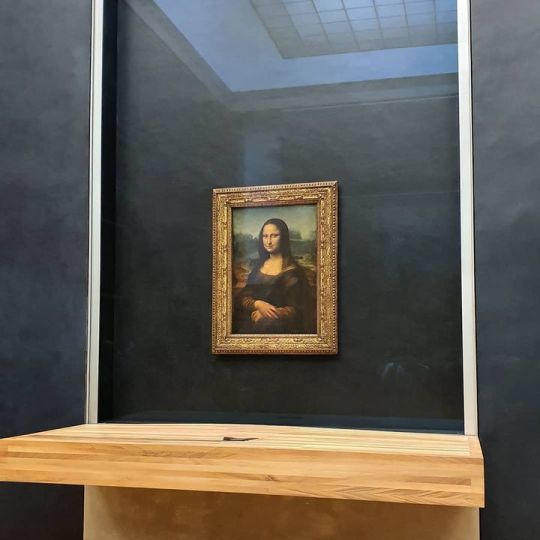
A faint smile at the end of the room done in sfumato technique. From the Italian word fumo meaning smoke, it is the soft blending of colors progressing to a hazy illusion similar to that of the peripheral sensation of the eye. . . #monalisa #davinci #sfumato #renaissance #louvre #monalisasmile #smile #parisfrance #paintingoftheday #artappreciation #renaissanceart #artofinstagram #art #oilpainting #mysterious #arty #art_spotlight #technique #leonardo #artlessons #learningtolook
#monalisa#davinci#sfumato#renaissance#louvre#monalisasmile#smile#parisfrance#paintingoftheday#artappreciation#renaissanceart#artofinstagram#art#oilpainting#mysterious#arty#art_spotlight#technique#leonardo#artlessons#learningtolook
2 notes
·
View notes
Text
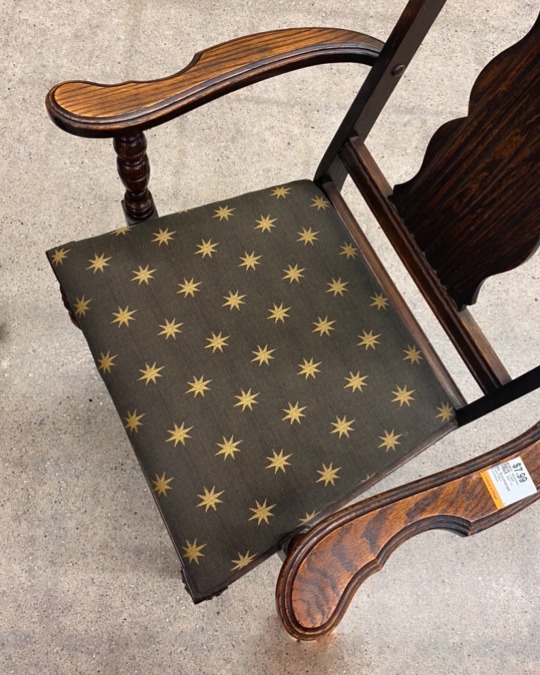

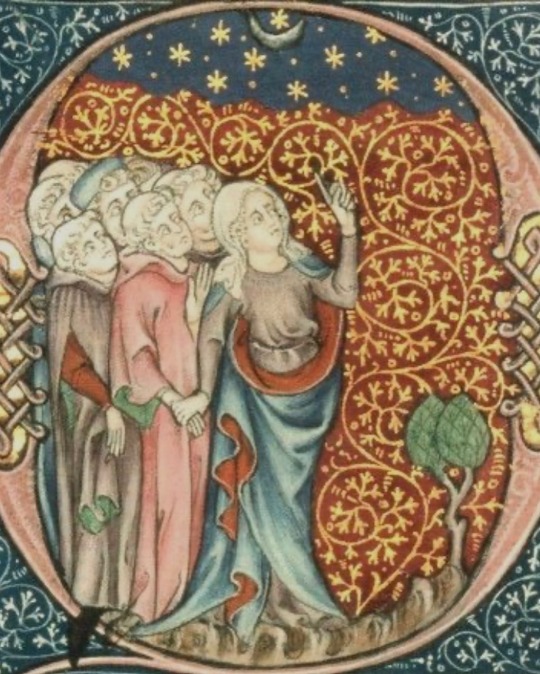


Found this chair at Value Village today and I instantly became emotionally attached to it. It was also giving a whimsigothic- Renaissance painting vibe 😌✨🌞🌑which always lures me in. #valuevillage #thrifted#renaissancevibes #renaissanceart #stars#whimsical #whimsigoth #whimsigothic #ruthspeerinspired #homedecor https://
#whimsigoth#whimsigothic#whimsical#homedecor#thrifted#thriftedchair#art#flowers#photography#fall#watercolor#painting#renaissanceart#renaissancevibes
17 notes
·
View notes
Photo

Inspirations behind our work from graphic identity to fine art geometry 🇮🇹 Designed in over 900 years ago, Renaissance architecture in #Florence is a fine work of art. Constructed in 1059 and took over 69 years to built, #FlorenceBaptistery is a bold contemporary work celebrating the symphony of shapes, forms and colors through iconic octagonal architecture. Captured by — @vincentvanduysen #graphic #graphicdesign #art #artlover #whitemarble #greenmarble #italianrenaissance #renaissanceart #renaissancearchitecture #chieseditalia #marblearchitecture #inspirations #architect #architecture #interiorarchitecture #interiordesign #architecturedesign #design #contemporaryart #contemporarydesign #branddesign #brandingtodayfortomorrow #ROMDESIGN (at Florence, Italy) https://www.instagram.com/p/Cpt4lKDLh-q/?igshid=NGJjMDIxMWI=
#florence#florencebaptistery#graphic#graphicdesign#art#artlover#whitemarble#greenmarble#italianrenaissance#renaissanceart#renaissancearchitecture#chieseditalia#marblearchitecture#inspirations#architect#architecture#interiorarchitecture#interiordesign#architecturedesign#design#contemporaryart#contemporarydesign#branddesign#brandingtodayfortomorrow#romdesign
2 notes
·
View notes
Photo

#ルネサンス絵画 のようだ #三笘薫 #決勝ゴール #ヘディング #Mitoma #KaoruMitoma #renaissanceart #goal https://www.instagram.com/p/CoRBeKVS9WA/?igshid=NGJjMDIxMWI=
2 notes
·
View notes
Text


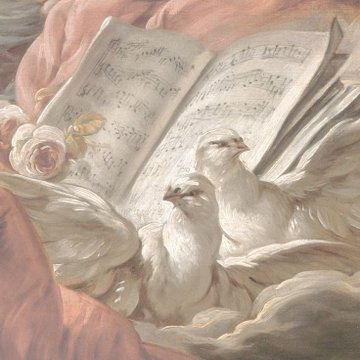
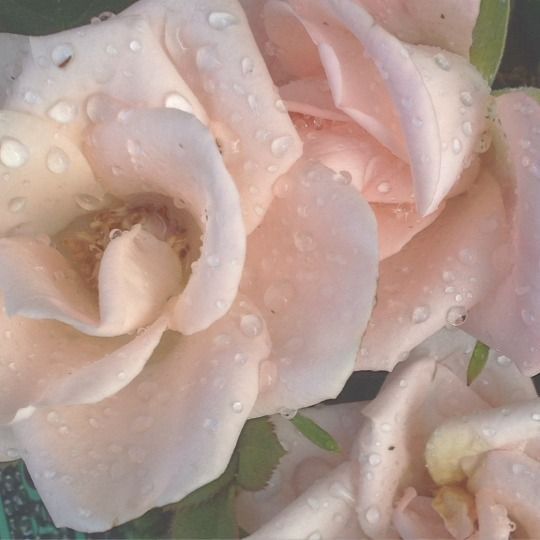


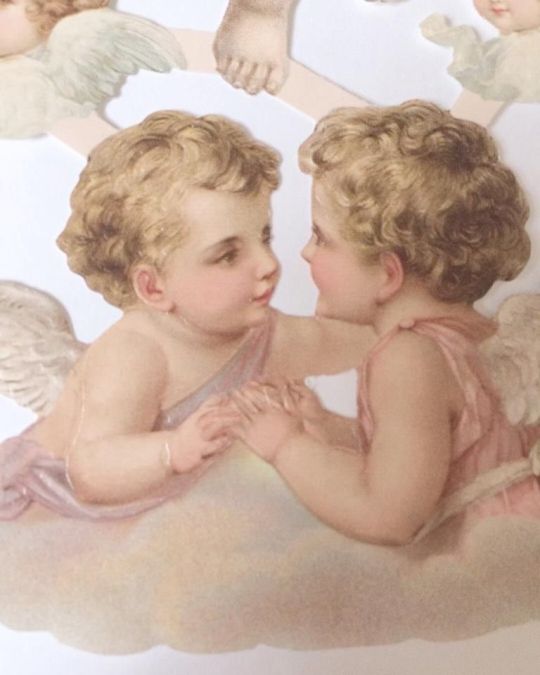


Aesthetic mood board
#pink aesthetic#light pink#pink flowers#baby pink#renaissance#renaissanceart#aestehtic#pretty things
3 notes
·
View notes
Text

The Luthier (@the.luthier) • Instagram photos and videos
#art#artoftheday#artistsoninstagram#artgallery#artist#artwork#artcollector#artofinstagram#graphicdesign#digitalart#arthistory#artlover#artstudio#arts#design#painting#instaart#digitalartist#illustration#baroque#artworks#renaissance#renaissanceart#historyofart#guitar#costumes#digitalpainting#interiordesign
7 notes
·
View notes
Photo

Once in a lifetime! Up on the scaffolding at the Cappella Brancacci to see Masaccio’s masterpiece up close for the first time... Here Masaccio’s • Baptism of the Neophytes • from 1425-27. What an incredible treat to be face to face with these unbelievable masterpieces of renaissance art! These frescoes inspired so many artists throughout history. One of them was the young Michelangelo, who made a beautiful study of the iconic shivering man (standing on the right in this scene) around 1494-96, when he was 19-21. See image 10. Some background. The Cappella Brancacci is a small chapel within the otherwise pretty plain Santa Maria del Carmine Church. In 1424 Felice Brancacci, a wealthy Florentine merchant and statesman, commissioned Masolino to paint his chapel with a cycle of frescoes illustrating the life of St. Peter (who can be identified by his orange gown). Masolino's associate, the talented 21-year-old Masaccio, 18 years younger than Masolino, assisted, but during painting Masolino abandoned the work and left to Hungary. The commission was given to Masaccio, he took over. However, still working in the chapel, Masaccio was called later that year to Rome, probably to discuss a new commission. Here in Rome, he died mysteriously, aged only 27! The remaining parts of the fresco cycle were completed by Filippino Lippi only much later in the 1480’s. #masaccio #masolino #filippinolippi #michelangelo #art #artist #painter #painting #fresco #fashion #muse #allegory #storytelling #mythological #religious #religiousart #renaissance #renaissanceart #arthistory #portrait #portraiture #figurative #figuration #figurativeart #theamazingpoppingeyes #cappellabrancacci #brancaccichapel #florence https://www.instagram.com/p/CmpS-zaL2OI/?igshid=NGJjMDIxMWI=
#masaccio#masolino#filippinolippi#michelangelo#art#artist#painter#painting#fresco#fashion#muse#allegory#storytelling#mythological#religious#religiousart#renaissance#renaissanceart#arthistory#portrait#portraiture#figurative#figuration#figurativeart#theamazingpoppingeyes#cappellabrancacci#brancaccichapel#florence
2 notes
·
View notes
Text
Discovering the Charms of Italy from Bangladesh: Schengen Tours to Rome, Florence, and Venice

Italy, with its rich history, magnificent art, and picturesque landscapes, is a dream destination for many. For travelers from Bangladesh, embarking on a Schengen tour to Italy's iconic cities—Rome, Florence, and Venice—offers an unforgettable journey filled with cultural and culinary delights.
Rome: The Eternal City
Our Italian adventure began in Rome, a city steeped in history and vibrant with modern life. Known as the Eternal City, Rome's blend of ancient monuments and bustling urban scenes provided a captivating start to our tour.
Ancient Wonders: The Colosseum, a symbol of ancient Rome's grandeur, was our first stop. Standing inside this monumental amphitheater, we could almost hear the echoes of gladiatorial combats. The Roman Forum, with its ruins of government buildings and temples, offered a glimpse into the daily life of ancient Romans. The Pantheon, with its impressive dome, showcased the architectural genius of ancient Rome.
Vatican Treasures: Visiting Vatican City was a profound experience. St. Peter's Basilica, one of the largest churches in the world, stunned us with its magnificent architecture and spiritual atmosphere. The Sistine Chapel, with Michelangelo's famous frescoes, left us speechless with its artistic brilliance.
Gastronomic Delights: Rome's culinary scene was a feast for the senses. From savoring creamy pasta carbonara to enjoying wood-fired pizza, every meal was a celebration of Italian cuisine. Gelato, with its myriad of flavors, became our daily treat as we explored the city's charming streets.
Florence: The Cradle of the Renaissance
Next, we journeyed to Florence, the cradle of the Renaissance. This city, known for its artistic heritage and stunning architecture, captivated us with its timeless beauty.
Artistic Masterpieces: The Uffizi Gallery, home to works by Botticelli, Michelangelo, and Leonardo da Vinci, was a highlight of our visit. The Accademia Gallery, where Michelangelo's David stands, provided a deep appreciation for Renaissance art. Each masterpiece we encountered told a story of artistic brilliance and historical significance.
Architectural Marvels: The Florence Cathedral, with its distinctive dome designed by Brunelleschi, dominated the city's skyline. Walking across the Ponte Vecchio, a medieval bridge adorned with jewelry shops, offered picturesque views of the Arno River and the city's charming landscape.
Tuscan Cuisine: Florence delighted us with its Tuscan culinary traditions. We enjoyed hearty dishes like ribollita and bistecca alla fiorentina, and the local wines from nearby vineyards added a special touch to our dining experiences.
Venice: The Floating City
Our final destination was Venice, a city known for its labyrinthine canals and romantic ambiance. Venice's unique charm and enchanting beauty made it the perfect conclusion to our Italian journey.
Gondola Rides: Navigating the canals of Venice on a gondola was an experience like no other. The serene waters, historic buildings, and charming bridges created a magical atmosphere that felt timeless.
St. Mark’s Square: St. Mark’s Basilica, with its opulent design and stunning mosaics, showcased Venice's rich history and artistic heritage. The Doge’s Palace, with its intricate Gothic architecture, offered a glimpse into the grandeur of Venice's past. The lively St. Mark’s Square, filled with cafes and street performers, was a vibrant hub of activity.
Venetian Cuisine: Venice's culinary offerings were unique and delightful. We savored cicchetti, small Venetian snacks, and enjoyed dishes like risotto al nero di seppia (squid ink risotto). Fresh seafood and traditional Venetian pastries added to the culinary charm of the city.
Choosing the Right Travel Agency
Planning our Schengen tour from Bangladesh to Italy involved selecting a reliable travel agency to handle the logistics. We considered several options, including Al-Haramain Travel, Dhaka Travels, and Exotic Tours. Ultimately, we chose Roomchai Limited, and it proved to be an excellent decision.
Roomchai Limited: Roomchai provided comprehensive services, from visa assistance to booking flights and accommodations. Their detailed itineraries and excellent customer support ensured a smooth and enjoyable journey.
Reflections on Our Journey
Our Schengen tour through Italy was a journey of discovery, beauty, and enchantment. Each city—Rome, Florence, and Venice—offered a unique blend of history, art, and culture that left us with lasting memories.
For fellow travelers from Bangladesh considering a similar journey, we highly recommend choosing a reputable travel agency like Roomchai Limited. Their expertise and support can make all the difference in ensuring a seamless and fulfilling trip.
Italy's charms are endless, and our experience in Rome, Florence, and Venice only deepened our appreciation for this beautiful country. Whether you're drawn by the allure of ancient history, the splendor of Renaissance art, or the romance of winding canals, Italy promises a journey that will captivate your heart and soul.
#travel#Italy#Rome#Florence#Venice#Schengen#travelFromBangladesh#ItalianCuisine#RenaissanceArt#GondolaRides#RoomchaiLimited#TravelAgency#EuropeanTour#HistoricLandmarks#VaticanCity#TuscanCuisine#VeniceCanals#CulturalHeritage
0 notes
Text
Artistic Visions of Passion — How Love Inspires Creativity
Hello, everyone! In today’s exploration, we dive into the beautiful intersection of art and emotion. We’ll see how artists and writers across ages have captured the essence of love and passion, turning deep feelings into stunning visual and literary masterpieces.
The Influence of Love in Art and Literature
Classical Antiquity: In ancient Greece and Rome, love was often portrayed as both sublime…
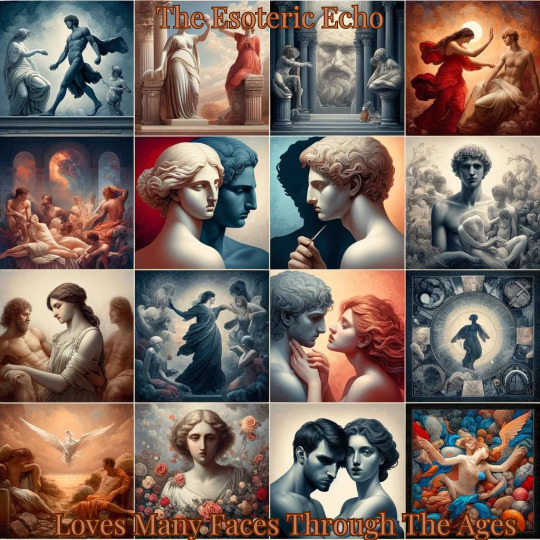
View On WordPress
#ArtAndLove#ArtHistory#ArtisticExpressionsOfLove#ArtisticInspirations#ClassicalArt#ContemporaryArt#CreativeExpressionsOfLove#DepictionsOfLove#EvolutionOfArt#HistoricalArt#LiteratureAndLove#LoveInArt#LoveInLiterature#LoveThroughArt#ModernArt#ModernistArt#PassionInPaintings#RenaissanceArt#RomanticArt#RomanticismArt
0 notes
Link
Art lovers and history buffs, rejoice! Hilton has unveiled a stunning new addition to its Curio Collection by Hilton portfolio – the Anglo-American Hotel Florence. This meticulously restored 19th-century gem boasts a vibrant blend of historical charm and modern elegance, promising an unforgettable stay in the heart of Tuscany. A Storied Legacy Meets Modern Luxury Originally built in 1892, the Anglo-American Hotel Florence has a rich past that includes welcoming legendary figures like Leo Tolstoy and Maria Callas. Following its acquisition in 2021 by Fund Star II, the hotel underwent an extensive renovation overseen by Italian architect Chiara Caberlon. This meticulous project aimed to preserve the hotel's historical essence while infusing it with contemporary sophistication. Anglo-American Hotel Debuts Step inside, and you'll be greeted by an eclectic and unconventional atmosphere. Guest rooms feature a distinctive color palette, creating a lively and artistic ambiance. Intriguing details and furnishings inspired by 1920s artwork are woven throughout the hotel, adding a touch of whimsical charm. Modern amenities seamlessly complement the historical touches. Guests can enjoy a workout in the well-equipped gym or utilize the two meeting rooms capable of accommodating up to 70 people – perfect for business travelers or small events. A Haven for Art, Wine, and Gastronomy Whisper Wine Bar and Courtyard: This vibrant space, once the cultural salon of the British ladies' community "Scorpions" in the 1930s, now serves as the hotel's central social hub. Live jazz and soul music fill the air as guests indulge in signature cocktails, an extensive selection of Tuscan wines, and delectable charcuterie and cheese platters. Don't miss the stunning open-air courtyard, a serene oasis ideal for soaking up the Tuscan sun or enjoying a shaded retreat under one of the many parasols. This versatile space transforms into a vibrant venue, hosting art exhibitions, poetry readings, and live music performances. Vivi Bistro: A culinary haven for both international and local palates, Vivi Bistro offers a delectable menu featuring fresh, seasonal ingredients. Start your day with a delightful breakfast buffet, or savor a leisurely lunch or dinner featuring Italian classics like handmade pasta and traditional desserts. The restaurant's sophisticated ambiance, with its soft color palette and refined design, provides the perfect backdrop for a memorable dining experience. A Prime Location for Exploring Florence's Treasures Beyond the hotel's walls, a world of cultural and historical wonders awaits. The Anglo-American Hotel Florence is conveniently situated within a 15-minute walk of Florence's most renowned landmarks. Immerse yourself in the city's rich Renaissance heritage by exploring the iconic Cathedral of Santa Maria del Fiore, Piazza Duomo, the Uffizi Palace and Gallery, the Accademia Gallery, and the Ponte Vecchio bridge. Art and architecture enthusiasts will be in their element, surrounded by masterpieces by legendary artists like Giotto, Brunelleschi, Botticelli, and Michelangelo. This central location makes the Anglo-American Hotel Florence the ideal base for exploring all that Florence has to offer. A Rewarding Stay with Hilton Honors By choosing to stay at the Anglo-American Hotel Florence, you automatically become part of the award-winning Hilton Honors guest loyalty program. This program offers a multitude of benefits for over 180 million members who book directly with Hilton. Here are some of the perks you can enjoy: Earn Points for your hotel stays and experiences Unlock instant rewards and benefits like contactless check-in with room selection Enjoy exclusive member discounts on your stay and other Hilton experiences Whether you're a seasoned traveler or embarking on your first Florentine adventure, the Anglo-American Hotel Florence promises an exceptional stay. With its captivating blend of history, art, and modern comforts, this Curio Collection gem is poised to become a favorite among discerning travelers seeking an unforgettable experience in the heart of Tuscany.
#accommodation#AngloAmericanHotelFlorence#AngloAmericanHotelDebuts#artinspireddesign#CurioCollectionbyHilton#Florence#historicallandmarks#hotel#Italy#luxurystay#Renaissanceart#Tuscany#ViviBistro#WhisperWineBar
0 notes